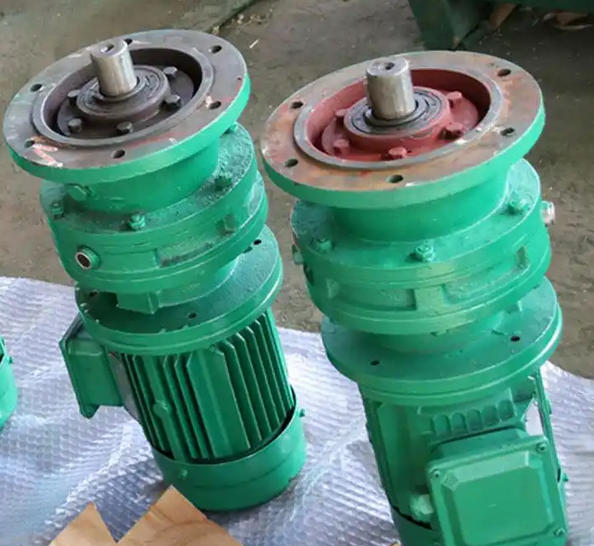How to deal with the scrapped BLD17-29-30KW cycloidal pinwheel reducer
After the BLD17-29-30KW cycloidal pinwheel reducer is scrapped, priority should be given to following the principle of "safe disassembly → classified recycling → compliant disposal", which not only avoids environmental pollution but also maximizes the value of recycling and utilization. At the same time, attention should be paid to avoiding safety risks and environmental violations.
1. Preprocessing: Safe shutdown and preliminary cleaning
Before any processing, security preprocessing must be completed to prevent accidents from occurring during subsequent operations.
Cut off the power source: Ensure that the gearbox is completely powered off and disconnected from air (if there is a pneumatic auxiliary device), and hang a "Do Not Close" sign at the power switch to avoid accidental start-up.
Drain lubricating oil: Open the oil drain valve and drain all residual waste lubricating oil into a dedicated collection container. It is strictly prohibited to dump it directly onto the ground or sewer. Waste lubricating oil should be stored separately and handed over to qualified units for disposal.

External cleaning: Remove dust, oil stains, and debris from the surface of the gearbox for easy disassembly and component identification.
2. Core processing: disassembly and classification recycling
Scrap gearboxes contain a variety of recyclable materials and potentially usable components, and disassembly and classification are key steps in enhancing their recycling value.
Classification of Recyclable Metals:
Main components: casing, cycloidal gear, needle gear housing, output shaft, etc. are mostly made of cast iron or cast steel, which can be recycled as scrap steel/scrap iron and cleared by professional scrap recycling institutions.
Precious components: Metal skeletons (such as copper parts) in internal bearings and seals can be disassembled and classified separately. Copper has a higher recycling value than ordinary steel, and processing it separately can increase recycling revenue.
Potential available component inspection:
If some auxiliary components (such as motor junction boxes, temperature sensors, oil level gauges, etc.) are not damaged, they can be removed for cleaning and maintenance, and used as spare parts for equipment of the same model to reduce subsequent equipment maintenance costs.
Attention: If the core transmission components (such as cycloidal gears and needle teeth) are severely worn or deformed, they have no reuse value and are directly classified as scrap metal.
Disposal of non recyclable waste:
Aging seals (such as O-rings, oil seals), damaged insulation materials, etc., belong to general industrial solid waste and need to be placed in dedicated garbage bags and disposed of by designated solid waste treatment units in the park or enterprise. They cannot be mixed with household waste.
3. Compliance requirements: Avoid environmental and safety risks
The handling process must comply with local environmental and safety regulations to avoid penalties for violations.
Waste oil disposal: Waste lubricating oil belongs to hazardous waste (HW08 category) and must be disposed of by units holding a "Hazardous Waste Operation License". It cannot be sold or dumped on its own, and the qualification documents and transfer receipts of the disposal unit must be retained for inspection by the environmental protection department.

